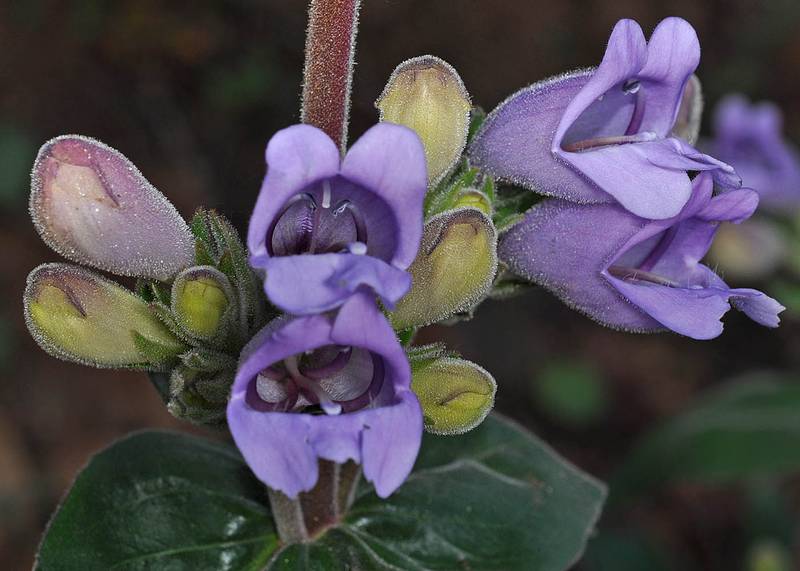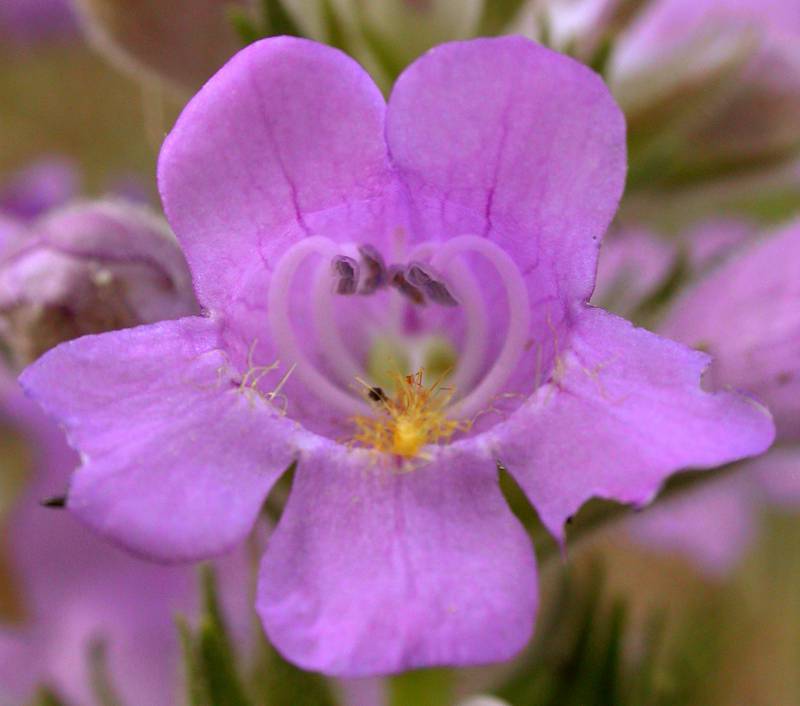Penstemon glandulosus
Penstemon eriantherus
glandular penstemon
crested-tongue penstemon, fuzzy-tongue penstemon
Leaves opposite, sharply toothed or entire, the basal ones 10-35 cm. long and 2.5-9 cm. wide, petiolate, the blade lanceolate to elliptic; lowermost cauline leaves reduced, the others well-developed, sessile and often clasping, broadly lanceolate to rotund-ovate, 4-12 cm. long and 2-5 cm. wide.
Leaves opposite, entire or with a few teeth, up to 13 cm. long and 2 cm. wide.
Inflorescence of several verticillasters;
calyx 9-15 mm. long, the 5 segments narrow and herbaceous;
corolla blue-lavender, strongly glandular-hairy outside, glabrous inside, 28-40 mm. long, over 1 cm. wide at the mouth;
anthers permanently horseshoe-shaped, 1.7-2.3 mm. long;
pollen sacs dehiscent across their apices, the lower part saccate and indehiscent, glabrous;
staminode glabrous, the tip flattened.
Inflorescence of several verticillasters;
calyx elongate, 7-13 mm. long, the 5 segments narrowly lanceolate, wholly herbaceous;
corolla covered with stalked glands, lavender to reddish-purple or deep bluish-purple, 2-4 cm. long, inflated, 6-14 mm. wide at the mouth, the lower lip the longer; raised portion of the lower lip strongly bearded;
pollen sacs glabrous, 1.1-1.8 mm. long, wholly dehiscent, becoming opposite;
staminode exerted, the tip slightly expanded, long-bearded most of its length;
ovary glandular-puberulent near the tip.
Capsules 10-14 mm. long, surpassed by the calyx.
Capsule 7-12 mm. long.
Penstemon glandulosus
Penstemon eriantherus
- Local floras:
BC,
OR,
WA
- Local Web sites:
Flora NW,
PNW Herbaria
WildflowerSearch
iNaturalist (observations)
USDA Plants Database
- LBJ Wildflower Center
- SEINet
- Plants of the World Online
- Encyclopedia of Life
- Wikipedia
- Google Image Search



